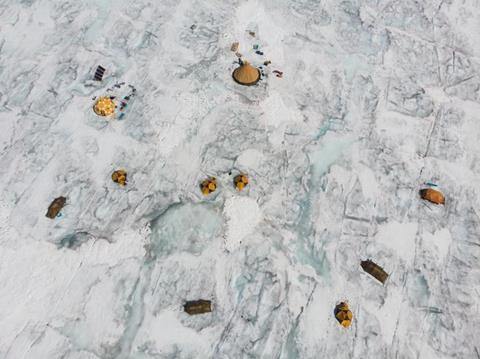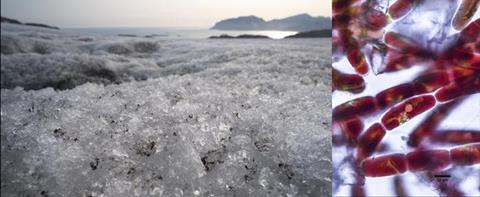Glaciers are huge white ice masses that can reflect a lot of sunlight. However, especially where the glaciers are not covered in snow and the bare ice is exposed, they sometimes have dark patches. These are microscopic algae that grow on the ice and darken its surface. As a result of this darkening, the tiny inhabitants cause the ice to warm up and melt faster.

Little is known about where the small algae get the necessary nutrients to survive in this hostile environment. A research team around Laura Halbach, Katharina Kitzinger and Alexandre Anesio from the Max Planck Institute for Marine Microbiology in Bremen, Germany, and the Danish University of Aarhus investigated this question on the Greenland Ice Sheet.
They discovered that the algae on the glacier ice are true champions of nutrient uptake. “I wanted to understand how such algal blooms can develop in Greenland,” explains lead author Laura Halbach from the Max Planck Institute for Marine Microbiology.
READ MORE: Arctic viruses in the surface microlayer help their hosts to survive extreme temperatures
READ MORE: Flexible and resilient: remarkable cell functions of newly discovered algae species
Using new methods, Halbach was the first researcher ever to measure how the algae absorb and store nutrients. “The algae can grow and colonize the ice despite the scarcity of nutrients,” says Halbach. “On the west coast of Greenland, around a tenth of the ice melt is already caused by these microscopic inhabitants. In some cases, they darken the glacier surface so much that is even visible on satellite images.
”In view of the fact that the climate is getting warmer and ever more snow-free areas and thus more potential habitat for the algae appears on the Greenland Ice Sheet, the algae’s ability to efficiently absorb and store nutrients is particularly significant.”
Efficient nutrient uptake of global importance
The Greenland Ice Sheet plays an important role in our climate. Its melting contributes significantly to global sea level rise, as it releases large quantities of fresh water into the oceans. Due to global warming, the snow disappears from ever more glacier areas and the ice is exposed.
This creates new areas that can be colonized by ice algae, which in turn accelerates the melting – a cycle that urgently needs to be understood in more detail.

The present study takes us a big step forward: “Until now, there have been no measurements of how the ice algae supply themselves with nutrients,” says Halbach. “We are now closing this gap with a particularly precise method that allows us to measure the nutrient uptake and storage of individual cells. Our results show that the algae can grow rapidly even though there are hardly any nutrients available on the spot. Instead, they can efficiently take up inorganic nitrogen and are good at storing phosphorus.”
Potential positive feedback
If these ice algae are not otherwise decimated, for example by parasitic fungi or a lack of trace elements, there would be little to stop their growth. They could grow on exposed ice surfaces and thus intensify the ice melt - a potential positive feedback with global warming.
The findings of the researchers led by Laura Halbach are not only fascinating, but also important. They will help to better predict the contribution of the dark pigmented algae to the melting of the Greenland Ice Sheet. Calculations of the annual ice melt are incorporated into today’s climate models. The new findings could be used to improve the representation of the algae in models predicting the ice melt, and thus better incorporate its effect on the global climate.







No comments yet